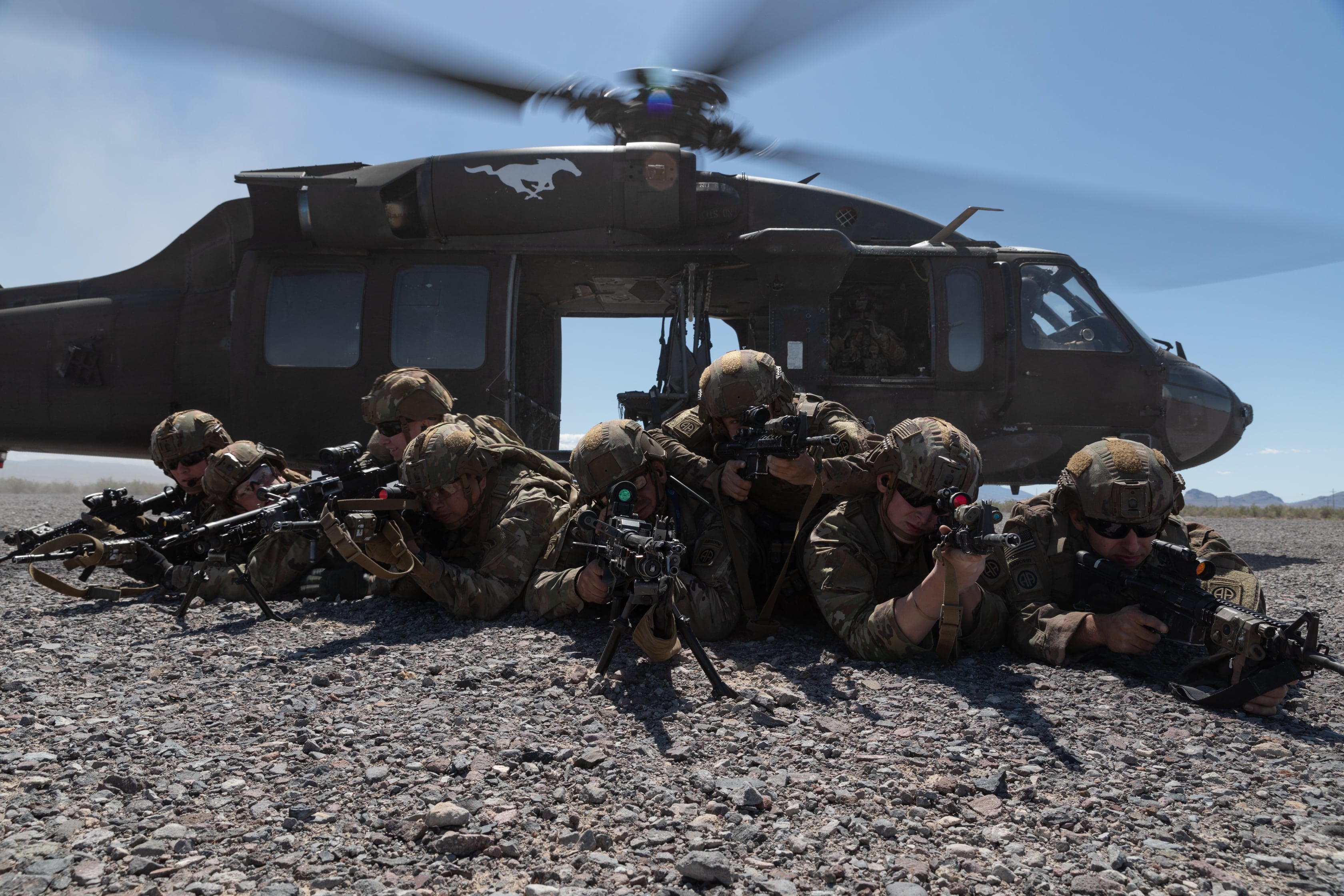WASHINGTON — Fiscal 2023 proved busy for the Army’s top personnel officials.
A recruiting crisis made it harder to fill the ranks — and project what future forces the service needs and how it can fill those units. A new Army-wide human resources system debuted after multiple delays. And Russia invaded Ukraine.
According to Lt. Gen. Douglas Stitt, the Army’s top personnel officer and leader of its G-1 directorate, these events combine to create a “growth industry” where the service’s personnel pros can apply new technology and tricks to the “lost arts.” Stitt and his senior enlisted adviser, Sgt. Maj. Christopher “Smoke” Stevens, spoke with Army Times at the Pentagon on Sept. 25 ahead of the Association of the U.S. Army’s annual conference.
The war in Europe has resulted in massive casualties on both sides, and the pair of U.S. officials took note of lessons learned from the fight that can be applied to human resources professionals. Rebuilding a shattered unit is a daunting task, as can the process of sending a large number of troops overseas for battle.
“Sgt. Maj. Stevens and I, when we first came in as HR professionals, we ... spent a lot of time in division Warfighters and [training rotations] talking about casualties, replacements [and unit] reconstitution,” Stitt said. But those ideas fell out of vogue in recent decades — out of necessity — amid America’s focus on counterterrorism.
“Let’s bring in the next generation and make sure they’re trained and prepared to take on these tasks,” Stitt added.
The career field’s schoolhouse at Fort Jackson, South Carolina, has integrated Ukraine’s “real-world examples” of large-scale combat personnel doctrine concepts that the U.S. Army hasn’t employed en masse since the Korean or Vietnam wars, he said.
In Stitt’s eyes, those new HR soldiers are also entering the field “on the ground floor of some emerging technology.”
The service’s leaders hyped the potential of its new personnel platform — the Integrated Personnel and Pay System-Army, or IPPS-A — for years before its release in December 2022.
While many emphasized IPPS-A’s potential to improve HR customer service, the Army’s personnel pros were quietly excited for its business analytics tools that allow for powerful custom manpower reports. Now in a mater of minutes, personnel troops can create detailed reports that once required pulls from multiple databases and complex compilation techniques.
RELATED

Stitt noted there is an increased focus on training data analytics in the Fort Jackson schoolhouse, too.
Now that IPPS-A and its reporting tools are here and personnel pros are improving their data proficiency, Stitt explained, it’s time to “really look at strength management [and] get into the weeds of looking out for strength forecasts and projections.”
Those capabilities and the revamped training couldn’t come at a better time for the service; a recruiting crisis has made it increasingly difficult for the Army to keep units filled and ready for missions around the world. The Army’s success at retaining soldiers has also raised the risk of some career fields being overstaffed in their mid-career ranks unless their career development needs are adequately tracked and managed.

Stitt confirmed the Army has issued new “manning guidance” to ensure priority units receive an adequate percentage of the troops they’re authorized to have. He noted it can be challenging or even disappointing for some units to learn they won’t receive full manning, but the recruiting crisis has forced the Army’s hand.
The three-star general said communicating the broader manpower situation is necessary to “ensure ... commanders understand where their units are” in a training or deployment cycle, because “everybody’s important, [but] not everybody’s a priority.”
Another communication challenge Stitt’s team faces, he said, is making sure commanders and division- or installation-level assignment teams are harnessing IPPS-A’s potential to “really understand who you have in your formation. How are we integrating the business analytics so we can get after projections?”
Ultimately, as Army Secretary Christine Wormuth told Army Times in June, the service will make unspecified force structure changes — cutting some units and creating others — to ensure its manpower requirements align with its mission requirements.
Wormuth and Stitt declined to elaborate on the cuts and what new units will emerge, the details of which aren’t finalized until the service completes its so-called Total Army Analysis force management recommendations for fiscal 2025 through fiscal 2029.
In the meantime, Stitt asked the force “to have trust and confidence in us that we care about them. This isn’t just a bunch of faceless individuals behind the curtain trying to conspire against them.”
“We are soldiers, too, and we understand the importance of our jobs so that soldiers can do their jobs,” he said.
Davis Winkie covers the Army for Military Times. He studied history at Vanderbilt and UNC-Chapel Hill, and served five years in the Army Guard. His investigations earned the Society of Professional Journalists' 2023 Sunshine Award and consecutive Military Reporters and Editors honors, among others. Davis was also a 2022 Livingston Awards finalist.








